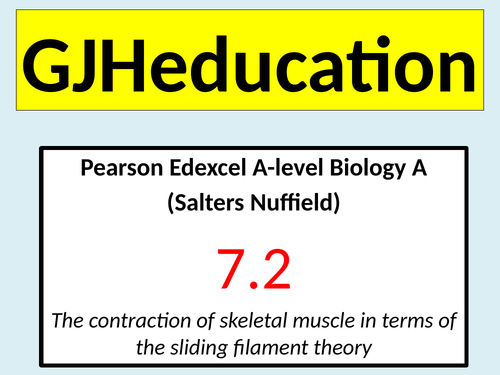



This fully-resourced lesson describes the process of skeletal muscle contraction in terms of the sliding filament theory. The engaging and detailed PowerPoint and accompanying resources have been designed to cover point 7.2 of the Pearson Edexcel A-level Biology A (Salters Nuffield) specification and includes the role of actin, myosin, troponin, tropomyosin, calcium ions and ATP.
The lesson begins with a study of the structure of the thick and thin filaments. Students will recognise that the protruding heads of the myosin molecule are mobile and this enables this protein to bind to the binding sites when they are exposed on actin. This leads into the introduction of troponin and tropomyosin and key details about the binding of calcium to this complex is explained. Moving forwards, students are encouraged to discuss possible reasons that can explain how the sarcomere narrows during contraction when the filaments remain the same length. This main part of the lesson goes through the main steps of the sliding filament model of muscle contraction and the critical roles of the calcium ions and ATP are discussed. The final task of the lesson challenges the students to apply their knowledge by describing the immediate effect on muscle contraction when one of the elements doesn’t function correctly.
This lesson has been written to tie in with another uploaded lesson on the structure of a muscle fibre which is covered in specification point 7.10
Something went wrong, please try again later.
This resource hasn't been reviewed yet
To ensure quality for our reviews, only customers who have purchased this resource can review it
Report this resourceto let us know if it violates our terms and conditions.
Our customer service team will review your report and will be in touch.